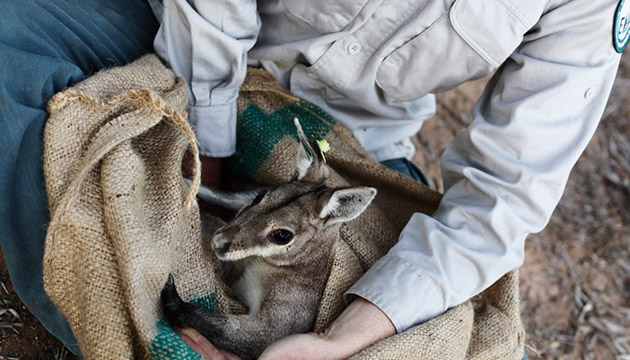An inspiring team in central Queensland is demonstrating how farming and species conservation can go hand-in-hand.
Story By Amanda Burdon
The bridled nailtail wallaby is snug inside a hessian bag, in the warm embrace of zoologist Janelle Lowry. All the female wallaby’s vital statistics have been recorded – microchip number, weight, head and tail circumference, hind foot length – and she has even had a few errant ticks removed from her petite ears. She is itching to return to the protection of the brigalow scrub on this cattle property south of Emerald, in central Queensland, but there is just one final check required. With the ease that comes only with regular practice, Janelle gently reaches into the soft folds of the wallaby’s pouch and stretches back the furred skin to reveal a pink, furless embryo perhaps just five days young.
A senior conservation officer with the Threatened Species Unit of Queensland’s Department of Environment and Heritage Protection (EHP), Janelle has devoted almost 20 years to protecting this endangered species. She visits the property Avocet about nine times each year to study the animal; installing remote-sensing cameras to spy on populations; monitoring and controlling its predators; spotlighting; and conducting mark and recapture surveys such as this one. But the sight of what she calls a “jellybean” never fails to impress. “I still get a thrill when I see pouch young,” Janelle says. “It’s the potential for the future right before your eyes, and in small island populations like this one, every single animal is important.”
This Story is from Issue #98
Outback Magazine: Dec/Jan 2015










